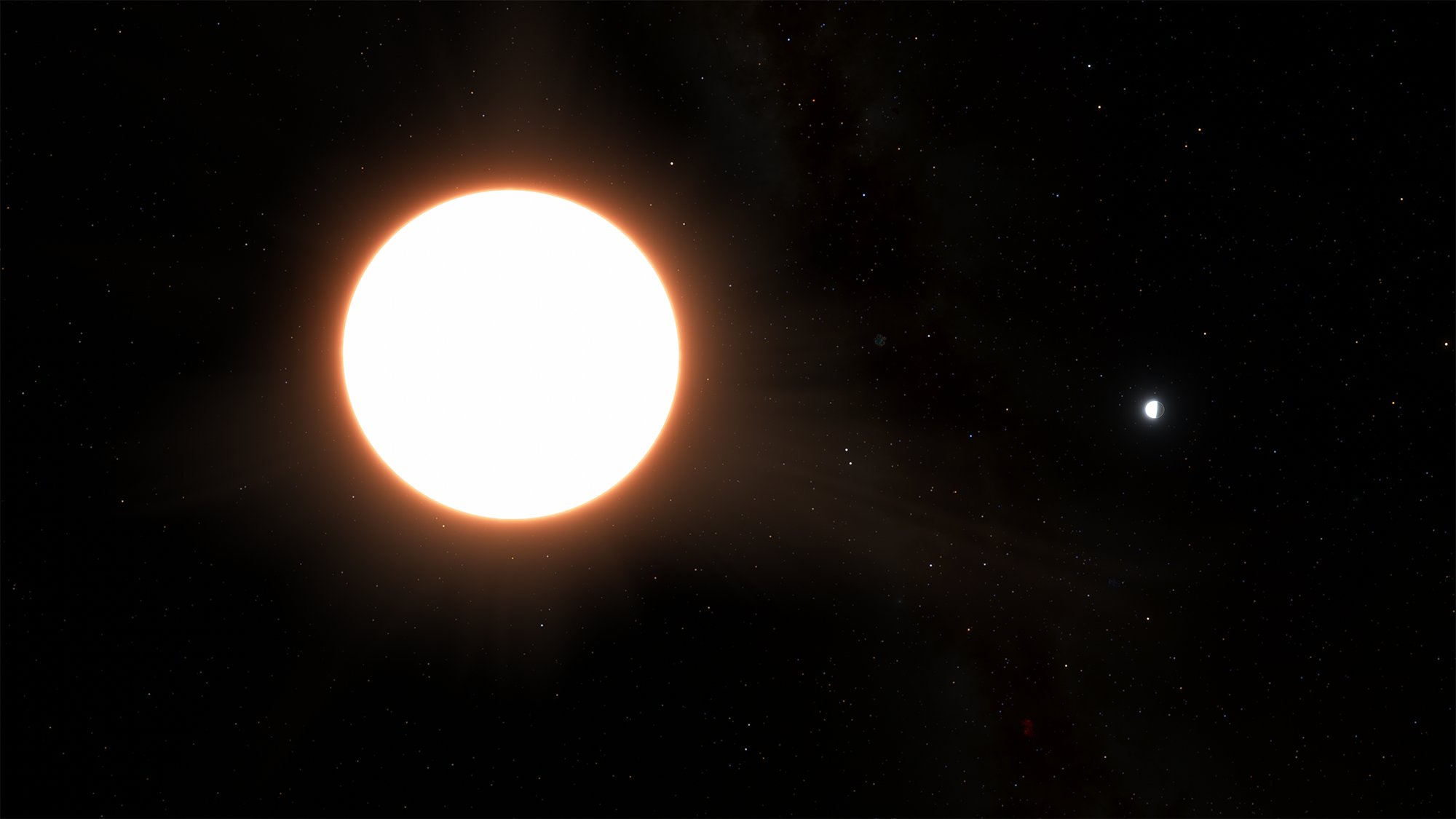

Astronomers from the European Space Agency (ESA) have discovered the shiniest known exoplanet in our universe to date. Named LTT9779 b, this ultra hot exoplanet revolves around its host star every 19 hours and is 262 light-years away from Earth.
[Related: Gritty, swirling clouds of silica surround exoplanet VHS 1256 b.]
In our night sky, the moon and Venus are the brightest objects. Venus’ thick cloud layers reflect 75 percent of the sun’s incoming light, compared to Earth’s cloud layers that just reflect about 30 percent. LTT9779 b and it’s reflective metallic clouds can match Venus’ shininess. Detailed measurements taken by ESA’s Cheops (CHaracterising ExOPlanet Satellite) mission shows that the glittering globe reflects 80 percent of the light that is shone on it by its host star.
LTT9779 b was first spotted in 2020 by NASA’s Transiting Exoplanet Survey Satellite (TESS) mission and ground-based observations conducted at the European Southern Observatory in Chile. ESA then selected this planet for additional observations as part of the Cheops mission.
At around the same size as the planet Neptune, LTT9779 b is the largest known “mirror” in the universe. According to ESA, it is so reflective due to its metallic clouds that are mostly made of silicate mixed in with metals like titanium. Sand and glass that are used to make mirrors are also primarily made up of silicate. The findings are detailed in a study published July 10 in the journal Astronomy & Astrophysics.
“Imagine a burning world, close to its star, with heavy clouds of metals floating aloft, raining down titanium droplets,” study co-author and Diego Portales University in Chile astronomer James Jenkins, said in a statement.
The amount of light that an object reflects is called its albedo. Most planets have a low albedo, primarily because they either have an atmosphere that absorbs a lot of light or their surface is rough or dark. Frozen ice-worlds or planets like Venus that boast a reflective cloud layer tend to be the exceptions.
For the team on this study, LTT9779 b’s high albedo came as a surprise, since the side of the planet that faces its host star is estimated to be around 3,632 degrees Fahrenheit. Any temperature above 212 degrees is too hot for clouds of water to form. On paper, the temperature of LTT9779 b’s atmosphere should even be too hot for clouds that are made of glass or metal.
“It was really a puzzle, until we realized we should think about this cloud formation in the same way as condensation forming in a bathroom after a hot shower,” said co-author and Observatory of Côte d’Azur researcher Vivien Parmentier in a statement. “To steam up a bathroom you can either cool the air until water vapor condenses, or you can keep the hot water running until clouds form because the air is so saturated with vapor that it simply can’t hold any more. Similarly, LTT9779 b can form metallic clouds despite being so hot because the atmosphere is oversaturated with silicate and metal vapors.”
[Related: JWST’s double take of an Earth-sized exoplanet shows it has no sky.]
In addition to being a shiny happy exoplanet, LTT9779 b also is remarkable because it is a planet that shouldn’t really exist. Its size and temperature make it an “ultra-hot Neptune,” but there are no known planets of its size in mass that have been found orbiting this close to their host star. This means that LTT9779 b lives in the “hot Neptune desert,” a planet whose atmosphere is heated to more than 1,700 degrees.
“’We believe these metal clouds help the planet to survive in the hot Neptune desert,” co-author and astronomer at Marseille Astrophysics Laboratory Sergio Hoyer said in a statement. “The clouds reflect light and stop the planet from getting too hot and evaporating. Meanwhile, being highly metallic makes the planet and its atmosphere heavy and harder to blow away.”
While its radius is about 4.7 times as big as Earth’s, one year on LTT9779 b takes only 19 hours. All of the previously discovered planets that orbit their star in less than one day are either gas giants with a radius that is at least 10 times earth (called hot Jupiters) or rocky planets that are smaller than two Earth radii.
“It’s a planet that shouldn’t exist,” said Vivien. “We expect planets like this to have their atmosphere blown away by their star, leaving behind bare rock.”
Cheops is the first of three ESA missions dedicated to studying the exciting world of exoplanets. In 2026, it will be joined by the Plato mission which will focus on Earth-like planets that could be orbiting at a distance from their star that supports life. Ariel is scheduled to join in 2029, specializing in studying the atmospheres of exoplanets.
